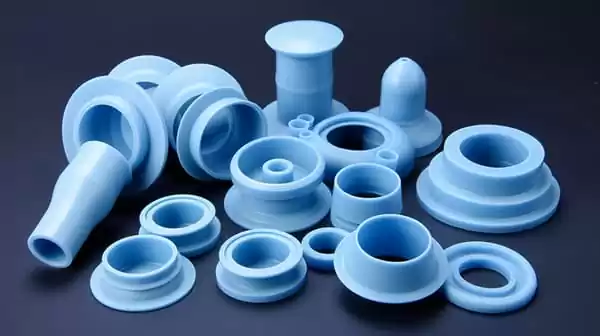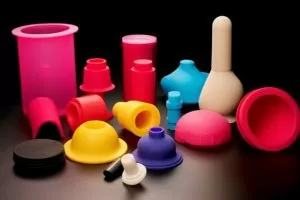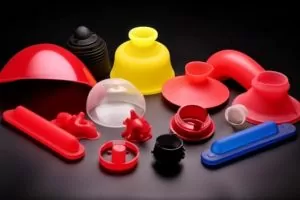Introduction
Mold release agents play an essential part in the molding industry by facilitating the easy removal of parts from molds without damage to either them or to themselves. These agents serve as a protective lubricant coating between the mold surface and parts to avoid sticking or binding together and ensure an easy release from their respective molds.
This article’s primary objective is to provide information on selecting an effective mold release agent for silicone rubber molds. We will explore various types of release agents, their advantages and disadvantages, and key considerations when using them and provide answers to frequently asked questions about using release agents as well as tips and best practices for their usage. By the time this article concludes, readers will have gained a greater insight into selecting appropriate release agents to facilitate efficient molding operations.

What are Mold Release Agents?
Mold release agents are substances applied to mold surfaces to avoid sticking or binding of molded parts during the molding process. These substances come in the form of liquids, waxes, or coatings specifically tailored for different molds and materials.
Mold-release agents come in two main varieties, known as sacrificial and non-sacrificial agents. Sacrificial mold release agents tend to be wax-based and intended for one use only; these release agents form a thin coating over the mold surface which dissolves with each part removed from it – leaving an empty mold surface for future cycles. Non-sacrificial release agents, typically silicone-based ones, provide multiple releases before needing reapplication – leaving behind either permanent or semi-permanent coatings which remain on its surfaces after being applied once or multiple times as multiple times before needing reapplication is necessary – providing multiple releases without needing reapplication or even after being used once!
Mold release agents offer many advantages for molding processes. Their use can improve cycle times, decrease scrap rates, increase production capacity, and extend mold service lives; while also producing more intricate molds with greater detail. Furthermore, mold release agents are a cost-effective solution that can increase both efficiency and effectiveness during molding operations.
Choosing the Right Mold Release Agent for Silicone Rubber
Selecting an effective mold release agent for silicone rubber molds is crucial to achieving optimal molding results. Selecting an inappropriate agent could result in sticking parts, longer cycle times, and higher production costs; so when making your selection heavy duty release agent, several factors such as surface type, process, and production capability must be taken into consideration.
When selecting a mold release agent for silicone rubber molds, it is essential to take the surface type into account. Molds with smooth surfaces may require different release agents than ones featuring textured or porous textures; injection molding processes also play a factor; such as high temperatures and pressures may necessitate heavier-duty release agents which can withstand pressure and temperatures more effectively.
Silicone rubber molds require various kinds of release agents that are specifically tailored to their release, including silicone-based release agents, water-based release agents, and synthetic rubber-based agents. Silicone-based release agents tend to be the most widely used as they offer excellent release performance; water-based release agents are eco-friendly yet easy to apply; synthetic rubber-based release agents offer superior release performance suited for producing o-rings or rubber parts.

Each type of mold release agent offers its own set of advantages and disadvantages. Silicone release agents tend to dry quickly, offering quick releases; however, they may be more expensive than others. Water-based release agents tend to be cost-effective and suitable for food grade or other sensitive applications, yet may not stand up well under high temperatures or stress environments. Synthetic rubber release agents work best with rubber molds but may not work effectively with other materials – ultimately the correct and best mold release agent formula depends on what your individual molding operation requires.
By considering factors like mold surface type, molding process, and production capacity when choosing the appropriate silicone rubber mold release agent for optimal performance and to avoid sticking or other potential issues.
Best Mold Release Agents for Silicone Rubber
Choosing a silicone rubber mold release agent requires taking several factors into account. Here are a few key ones:
Compatibility with silicone rubber
To ensure optimal results with silicone rubber mold release agents, be sure to select an agent designed specifically for it. Otherwise, this could result in poor mold release, fouling of molds, or other issues.
Molding Process and Temperature
Mold release agents designed to work for high-temperature molding processes may require different characteristics than those intended for low temperatures, for instance, if temperatures surpass 60 F the release agent must have heat-resistant capabilities.
Type of Mold and MOLDED Part
The type and complexity of the mold as well as molded part will have an impact on which release agent to choose. Complex molds may need something with superior coverage and lubrication properties to function optimally.
Production Capabilities and Cycle Times
Production capabilities and turnaround times also play a part in selecting an effective mold release agent, such as quick drying agents being more suitable for high-volume production with quick turnarounds.
Environmental and Safety Considerations
When selecting a mold release agent, take care to select one which is both environmentally friendly and safe to use. In particular, food-grade release agents may be necessary if the parts will come in contact with food.
On this basis, here are some recommended mold release agents for silicone rubber:
Frekote(r) Mold Release Agents
Frekote is renowned for its mold release agents that offer superior release, long service life, and exceptional lubrication properties. Available as silicone-based, non-silicone, and hybrid formulas to meet various application needs.
Chem-Trend(r) Mold Release Agents
Chem-Trend offers an assortment of mold release agents designed to improve production capacity and decrease cycle times for injection molding, transfer molding, and compression molding processes. Their products aim to enhance production capacity while decreasing cycle times.
Stoner(r) Mold Release Agents
Stoner is a widely recognized brand of mold release agents that offer fast drying times, superior release capabilities, and reasonable costs – suitable for many molding processes and applications.
McLube(r) Mold Release Agents
McLube offers an array of mold release agents suitable for polyurethane molding, hot stamping, and electrical component molding processes. Their products offer superior release for complex molds and parts.
Mold release agents for silicone rubber have many applications across multiple industries, including automotive, aerospace, medical, and food. Mold-release agents are used to producing rubber O-rings, seals, gaskets, and other rubber parts such as O-rings.

Choosing the appropriate mold release agent for silicone rubber molds is vital for efficient and cost-effective production. By considering all of the factors discussed above and selecting an approved brand’s release agent, you can increase molding operation efficiency while producing top-quality parts.
Conclusion
To summarize, mold release agents are essential for efficient and cost-effective production in the molding industry. Choosing the right silicone mold release agents for silicone rubber molds requires careful consideration of factors such as compatibility, molding process, type of mold and part, production capability, and environmental and safety concerns.
Silicone-based release agents, non-silicone release agents, semi-permanent release agents, water-based release agents, dry-film release agents, and heavy-duty release agents are all available options to choose from. Reputable brands such as Frekote®, Chem-Trend®, Stoner®, and McLube® offer a range of mold release agents for different molding processes and applications.
When selecting a mold release agent, it is important to follow proper application techniques and avoid common mistakes such as over-application or under-application. It is also recommended to use release agent additives and process aids to improve release performance and reduce cycle times.
In conclusion, choosing the right mold release agent for silicone rubber molds is crucial for achieving superior release, reducing mold fouling, and improving production capability. By considering the key factors discussed in this article and selecting a suitable release agent from a reputable brand, you can ensure the success of your molding operation and produce high-quality parts efficiently and cost-effectively.



